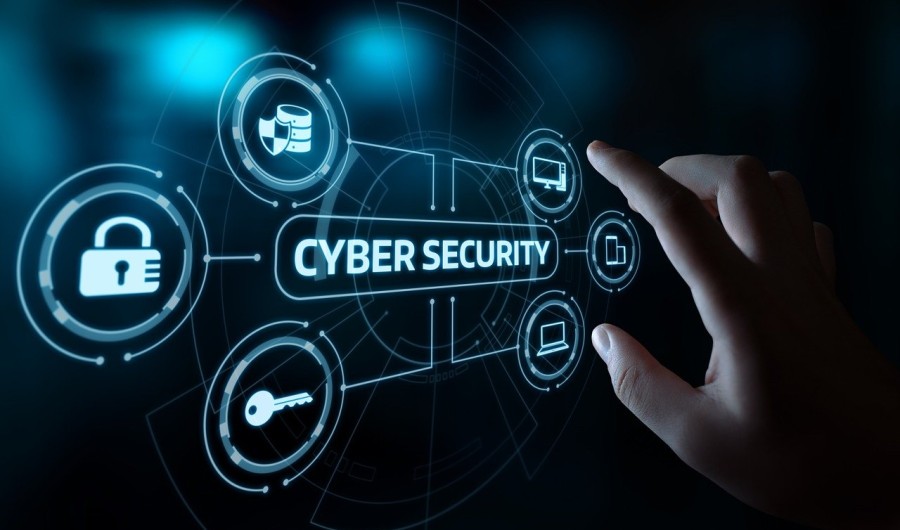
7 Cybersecurity Best Approaches for Remote Workers
Back in 2019, life used to be quite different but then the COVID-19 pandemic turned up life with 360 degrees. Not only have personal lives and the healthcare system been transformed, but many things have become “new normals” in professional lives as well.
According to a report published by the US News, only 5.7% of people were working remotely in the pre-COVID-19 era. But a drastic increase was observed instantly within a few months as the whole world was restricted to be confined in their homes and this percentage increased to 17.9%.
As the world is transitioning to remote working, security concerns have also arisen regarding official and professional data. You’ll get to know about how to mitigate cyber attacks and what measures to take to safeguard your data.
Are You A Remote Worker? You’re At Risk!
As per the report of the FBI, which was noticed just after one year of COVID-19, a 300% rise is noticed in cybercrimes. While working remotely, your data is at the edge of being stolen. Anyone can access your banking details or browsing history to collect information and then use it for their benefit or threaten you.
Even the high-tech companies had to bear big losses due to these cyber crimes. In 2020, one of the biggest breaches, Solar Winds happened. Some hackers accessed the system of Solar Winds and stole the data of thousands of their customers. This massive attack not only affected the companies and organizations but even the Government Departments.
Other than this, the Colonial Pipeline Incident, the Kaseya attack, and many others justify the statement of Lisa Miler that “Even the most secure organizations are vulnerable”.
7 Ways to Safeguard Your Security While Working Remote:
However, you are at high risk of cyber-attacks if you are working in a remote setting. According to IBM, it costs $1.07 million more if any data breaches happen in remote settings compared to office settings. This indicates that we need to adopt precautionary measures to combat these cybercrimes. Here are the eight ways that you can maximize your security while working remotely:
1. Create Strong Passwords
Sometimes, hacking can be as easy as guessing the password. A study conducted by Forbes states that 35% of cyber breaches are caused due to weak passwords. Cybersecurity specialists and professionals are always instructed to create strong passwords. But what is a strong password? CISA has provided basic criteria for generating strong passwords, which are:
- Length should be at least 16 characters
- Must contain uppercase and lowercase letters
- Must contain special characters (@, &)
- Must contain numbers
- It should be used only for one account
2. Update Your Routers
While working from your home, we often connect the internet to the home router. But do you know that this act of yours may provide an easy route for the attackers to install the malware?
In order to be safe, you need to take a few precautionary measures that are:
- Change the router’s automatic password to a unique and strong password.
- Change the SSID of your network that doesn’t indicate your identity by any means.
- Enable network encryption.
- For maximum security, only allow specific MAC addresses to access your router.
3. Use Your Digital Signature Carefully
As in the remote settings, digital signatures are used to sign documents such as letters, salary slips, etc. But do you the consequences of exploiting or misuse of your digital signature? Your e-signature can be used for fraud or theft activity and may also risk your bank account details.
To refrain from such situations, your signature design should be unique and tricky. Moreover only use trusted applications to generate and sign the documents and only share your signature with authorized and trusted networks.
4. Use VPN
Virtual Private Networks are likely to firewall and provide you with secure access to your company’s data. As VPNs mask the IP address it will protect the tracking of traffic. So, if you are working online, must connect to a secure VPN as it will provide you the enough security and protect your information from spyware.
5. Employ Security Softwares
While working from home, it’s necessary to use security software that can protect you from cyber-attacks. Consider spending money on this software as an investment, as it will protect you from all kinds of threats, including zero-day attacks, malware, spyware, viruses, phishing scams, etc.
6. Enable Multi-factor Authentication
It’s always better to bear some inconvenience over the loss of millions. Waiting for the security code while logging into the system every time might seem to be a hassle but it will maximize the safety.
For ultra-protection from cyber breaches, you can also enable multi-factor authentication as it only grants access if you provide two pieces of evidence. It means that even if someone has accessed your password, they won’t be able to log in until and unless they manage to provide the second piece as well. Usually, it sends a security code or a push notification for the second step of authentication.
7. Encrypt Your Data
Encryption is one of the most important pillars of cybersecurity as it encodes important information that can only be decoded by authorized parties or with a security code. So, in order to secure your data or emails, it’s always better to enable encryption. The encryption in Android and iOS devices is already enabled by default. At the same time, you are required to enable encryption on Windows, macOS, and Linux.
Conclusion
So, always be cautious and take all the possible measures to avoid any cyber attack. Get training related to cybersecurity risks while working in the home setting and how to cope with them. Moreover, get updated on recent trends and incidents to understand the patterns of cyber breaches.






